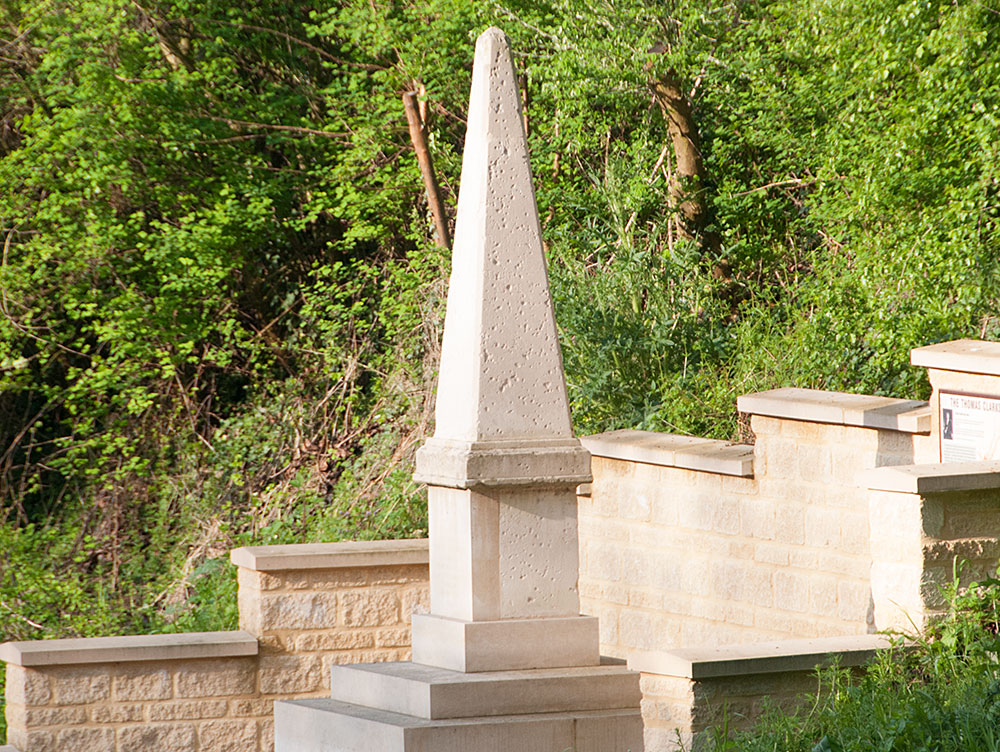| PPU HOME | faq | sitemap | ||
 |
||
|
||
 |
THOMAS CLARKSON |
Wadesmill, Hertfordshire |
Peace memorials Coventry Belfast
|
'Blink and you’ll miss it. The tiny obelisk on the road out of the Hertfordshire village of Wadesmill hardly presents itself to the world, yet it is one of the most important monuments in British History. It marks the spot where the slavery abolitionist Thomas Clarkson had an epiphany: on that day in June 1785, on a journey from Cambridge to London, he committed his life to ending the transatlantic slave trade. 'That marker serves as an appropriate symbol for the hidden history of the slave trade. The exchange in Africa of British goods for 3.25 million people (the international figure is nearer to 20 million Africans) to work the plantations of the West Indies and America is the single most important contributory factor in the country’s accumulation of wealth in the 19th century. In one sense the history is hidden; in another, it is clear for all to see.' Robert Nurden 2007. In 1779, Thomas Clarkson went to Cambridge University where he won a Latin essay competition on the subject of whether it was lawful to make slaves of others against their will. A few years later this led him to conclude that something must be done to end the slave trade and he published a translation of his essay. The essay attracted a lot of attention and in 1787with others he formed the Committee for the Abolition of the African Slave Trade. The Committee persuaded the MP William Wilberforce to take up the abolitionist cause while Clarkson travelled around country collecting the essential information for the committee to present to parliament and the public. This included interviewing 20,000 sailors and obtaining equipment used on the slave-ships such as iron handcuffs, leg-shackles, thumb screws, instruments for forcing open slave's jaws and branding irons. Clarkson has been long forgotten but belatedly a small plaque was unveiled in Westminster Abbey in 1996 and placed between the statues of Wilberforce and Stamford Raffles. The inscription reads ‘A friend to slaves THOMAS CLARKSON’. Clarkson was also one of the founders of ‘The Society for the Promotion of Universal and Permanent Peace’, also known as the ‘London Peace Society’. Founders believed that all wars were the ‘greatest possible scourge of the human race’ and that they not only were unlawful, but they violated the Christian faith. Rarely is this aspect of Clarkson’s work mentioned. An obelisk erected to mark the spot where Clarkson made his decision to work against the slave trade was erected in 1879 and has moved about a number of times as the road was improved and then widened and laid forgotten and neglected In November 2007 a £56,000 project funded by the National Lottery and others completed the restoration and ‘upgraded the heritage profile of the monument’ and re-site it closer to the original spot.
|
|
|
Peace Pledge Union, 1 Peace Passage, London N7 0BT. Tel +44 (0)20 7424 9444 contact | where to find us